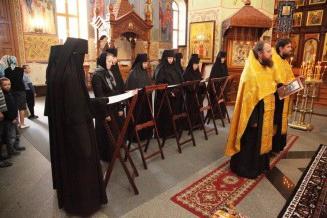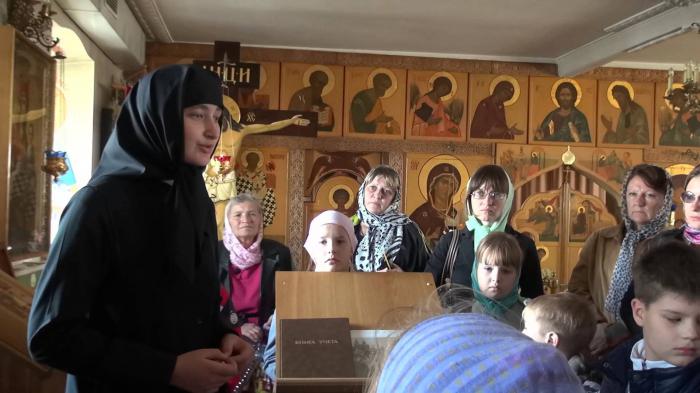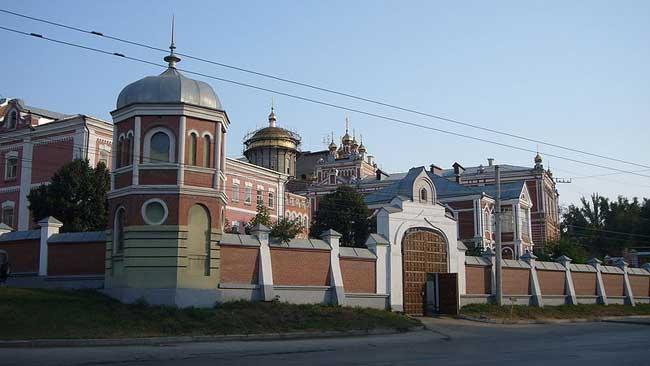Biblical wisdom teaches that the city will not stand in which there are not even three righteous. That is, true power is not in squads and military strength, but in God's help, sent down by the prayers of the holy saints. The Russian people understood this well, and therefore did not spare the money and labor for the construction of holy monasteries, which became not only the stronghold of Orthodoxy, but also an inexhaustible source of spiritual purity and morality. Our story will be about one of these monasteries, built on the banks of the Volga.
Fortress Samara town
Today, Samara is one of the largest cities in the Middle Volga. Its history goes back more than four centuries. In 1586, during the reign of Sovereign Fyodor Ioannovich, a fortress was founded on the Volga coast - Samara town. The time was turbulent, so a guard stronghold was needed, blocking the way for the steppe nomads. There also a holy monastery arose, which was called the Transfiguration Monastery. Warriors stood with weapons in their hands at the turn of the Russian land, and the monastery sisters offered prayers for overcoming the adversaries.
This continued until 1764, when, due to the small number of nuns, the monastery was abolished. The absence of a spiritual center, so necessary for life, could not but affect. In the first half of the next - XIX century, trends aimed at church schism intensified in society. In addition, various sects were widely used, the most active of which were representatives of the so-called Molokan heresy.
The need to create a cloister
To counter such phenomena, it was necessary to create a powerful stronghold of true Orthodoxy. To this end, the inhabitants of Samara turned to the Holy Synod with the initiative to open a convent in the city, designed for about a hundred inhabitants. Supporting the idea of the Samaritans, the leadership of the Synod, however, demanded specific information about the means by which it was planned to build the monastery.
This problem was solved in the old proven way - they announced the collection of donations for the construction of the monastery among the residents of the city. Particularly respected and religiously-minded citizens of the city formed a board of trustees who took over the organizational part of the enterprise, and several of the richest representatives of the city society made large financial donations and, importantly, wrote off the land plots belonging to them for the construction of the monastery.
Creating a female community
The foundation date of the monastery is considered to be 1850, when a chapel was built in which all-night vigils were performed. For their departure, the parable of two then-existing temples in the city — the Kazan Cathedral and the Trinity Church — was attracted. Over time, eight cells were built around the chapel, in which those who wished to devote their lives to the service of God settled.
From these first inhabitants in 1852, a small community was formed, for which a priest was appointed. The piety girl Maria Yanova became her abbot. This choice was very successful, since later she proved herself to be an energetic and talented organizer. Thanks to her labors, an intensive process of community development began.
Transformation of the female community into a monastery
Three years later, the first temple of the future monastery was built and consecrated, and soon another one consecrated in honor of the Mother of God of Jerusalem opened its doors on its lower floor. This happened in July 1857. However, this was only the beginning of extensive construction work. A year later, the care of the board of trustees of the diocesan authorities and the abbess of the community itself laid a large stone church in the name of the Presentation of the Lord.
Of course, such zeal on the part of those who devoted themselves to this pious work, and such an intense pace of community arrangement could not but provoke the most positive reaction of the leadership of the Holy Synod. The consequence of this was the transformation in 1860 of the female community into a monastery, which was called the Iversky Women's Monastery. Samara, in this way, received the stronghold of spirituality and religious enlightenment so necessary for her.
Organization of the economic life of the new monastery
Shortly before this solemn event, the abbess of the community, Maria Yanova, received monastic tonsure with the name Maragarita and, thanks to her merits, was elevated to the rank of abbess of the new monastery. Soon the tonsure and other sisters took place. From the surviving documents it is clear that in 1860 Iversky Convent in Samara was inhabited by twenty nuns and one hundred and ninety novices. For the newly discovered monastery, this is quite a lot. It is known that many monasteries at their foundation numbered a much smaller number of inhabitants.

From the first days of its existence, the Iversky Monastery (Samara) had to independently provide for its existence. The fact is that he belonged to the category of sociable non-standard monasteries and did not receive any subsidies for his maintenance. Of course, some of the necessary funds came from voluntary donors and in the form of payment for various religious items, such as, for example, long-term commemoration of the deceased, reading the Psalms in private homes and more. But the main income of the sisters was the money earned by them in the numerous workshops opened at the monastery.
It is known that here they painted icons and minted vestments for them, sewed church vestments and decorated them with elaborate gold embroidery, woven carpets and sewed elegant clothes for residents of the city. Even such purely masculine crafts as boot-making and bookbinding proved to be within the power of women's hands. Thanks to the industriousness of its natives and the generosity of the donors, the Iversky Monastery (Samara) lived and developed.
Mother Superior Antonina and her writings
Since 1874, the abbess of the monastery, instead of retiring after twenty-five years of ministry to mother Margarita, becomes Mother Superior Antonin. In earlier times, she served as a monastery treasurer. Like its predecessor, mother Antonina made an invaluable contribution to the organization of the life of the monastery. Due to her efforts in 1882, the construction of a warm stone temple in the name of the Tver Icon of the Mother of God began. Six years later, the temple was solemnly consecrated, and regular worship services began to take place in it.

But one of the main innovations, initiated by Mother Superior Antonina, was the construction of a spacious two-story hospital at the monastery. This project was implemented thanks to the generous donations of the Samara merchant P. Shikhobalova, who transferred all the necessary funds to the Iversky monastery (Samara). Two years later, in 1889, the parish school also opened in the monastery with the efforts of the abbess, in which about a hundred girls from the families of tradesmen and peasants were constantly studying, and with it a shelter for orphan girls was created.
The last years before the revolution
Mother Superior Antonina went to the Lord in 1892 and was buried in the church of the Tver Icon of the Mother of God, to the construction of which she put so much mental and physical strength. Her place was taken in the same way as she, who had previously obeyed the treasurer of the nun Theophania, but six years later she was removed from this post and gave way to priestly widow A.V. Milovidova, who took the name of Seraphim in monasticism. Over the following years, she led the monastery, skillfully combining spiritual and economic activities. Under her leadership, the Iversky Monastery (Samara) met the dramatic events of 1917.

It should be noted that by this period the monastery has achieved a lot in its development. On its territory were four temples. Services in the Iversky monastery (Samara) were attended by both the nuns of the monastery and the residents of the city. In addition, the monastery was famous for its well-equipped charitable institutions, among which were: a hospital, a parish school, an orphanage for girls and a strange hospitable house. The total number of inhabitants of the monastery in 1917 exceeded four hundred people.
The period of religious persecution
In the years following the October Revolution, the cloister shared the fate of many Russian monasteries. In 1919, she was stripped of her status as a religious institution. Of the ten residential premises, most were given as communal apartments for employees of local enterprises.
Separate temple buildings, originally provided for worship to the local Orthodox community, were redeveloped for household needs, and the central monastery church - the Assumption Cathedral - and its 65-meter bell tower were blown up. For many years, Iversky Monastery (Samara) interrupted its activities. The schedule of services of those years indicated only the continuation of the prayer service within the religious community, while the monastery itself was abolished.
The revival of the holy monastery
The revival of the holy monastery began in the nineties, when all over the country, everything that was illegally taken from it during the period of hard times was returning to the church. In 1991, the women's community was again organized, at the disposal of which the premises of the refectory church were transferred. Since that time, active restoration work has begun . A lot had to be rebuilt, recreating the look from the surviving photographs and memoirs of the city’s old-timers.
In its former glory, the Iversky Monastery (Samara) now stands over the Volga. The reviews of pilgrims and tourists who visited it indicate that the works of builders, restorers, and simply volunteers who wished to participate in its revival were not in vain. In 1994, a female community formed on its territory received the official status of a monastery. From this time until today, his abbess, John (Kapantantseva), has led it.
Nowadays
The Iversky Monastery (Samara) was filled in full with spiritual life. The schedule of services performed daily in it testifies to the full compliance of the services with the annual cycle established by the Charter of the Russian Orthodox Church. The flow of pilgrims who come to pray within its walls is growing day by day. The scheme is attached to the article, which clearly shows where the Iversky Monastery (Samara) is located. Address of the monastery: Samara, Volzhsky Avenue, 1.